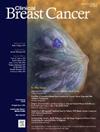忽略腋窝淋巴结清扫与早期乳腺癌区域复发风险增加有关:随机临床试验的系统回顾与元分析》(A Systematic Review and Meta-Analysis of Randomized Clinical Trials)。
IF 2.9
3区 医学
Q2 ONCOLOGY
引用次数: 0
摘要
乳腺癌(BC)是一个全球性问题,然而,尽管ALND被认为是结节阳性早期BC的标准治疗方法,但没有足够的数据来确定这些患者中哪些人应该接受ALND治疗。因此,本系统性综述旨在明确 NALND 和 ALND 在安全性和患者预后方面是否存在差异。我们在 PubMed、Embase 和 Cochrane 数据库中搜索了比较 NALND 和 ALND 的研究。统计工作在 R 软件中进行,对 I² < 25% 和 I² > 25% 的结果分别采用固定效应和随机效应模型,计算风险比和危险比及 95% CI。异质性用I2统计量进行检验。共纳入了 9 项研究,涉及 11,543 名患者,其中 5831 名患者被随机排除 ALND。随访时间从 5 年到 15 年不等,参与者的年龄从 53.4 岁到 70.1 岁不等。分析结果显示,随访结束时区域复发率明显增加(RR 1.73;95% CI,1.13 至 2.66),淋巴水肿明显减轻(RR 0.35;95% CI,0.24 至 0.52),但 OS(HR 1.01;95% CI,0.89 至 1.15)无明显结果。我们的数据表明,NALND虽然在预防淋巴水肿方面有一定的益处,但与较高的区域复发风险相关。因此,有必要开展进一步研究,以全面评估这些技术在乳腺癌治疗中的作用。本文章由计算机程序翻译,如有差异,请以英文原文为准。
Omitting axillary lymph node dissection is associated with an increased risk of regional recurrence in early stage breast cancer: a systematic review and meta-analysis of randomized clinical trials
Background
Breast cancer (BC) is a global problem, however, despite ALND is considered the standard treatment for early stage BC with node-positive, there is no sufficient data to determine which of these patients should undergo it. Thus, the aim of this systematic review was to clarify if there is any difference between NALND and ALND in terms of safety and prognosis of the patients.
Methods
A shearch was carried in PubMed, Embase and Cochrane databases for studies that compared NALND and ALND. The statistics was performed in R software, in which a restricted maximum likelihood estimator random-effect model were employed to compute risk ratios and hazard ratios with 95% CI. Heterogeneity was accessed with I2 statistics.
Results
There was 7 included studies, involving 7.338 patients, of whom 3.710 were randomized to omission of ALND. The follow-up period ranged from 5 to 10 years, with participant ages varying from 53 to 61 years. The analysis revealed significant increase in 10 years regional recurrence (RR 1.43; 95%CI 0.78 to 2.64; I²=0%) and a significant decrease in lymphedema (RR 0.35; 95% CI 0.23 to 0.53; I²=60%), however no significant result was found for last reported OS (HR 0.96; 95% CI 0.79 to 1.17; I2= 6%) or DFS (HR 1.002; 95% CI 0.960 to 1.045; I2=55%).
Conclusions
Our data suggest that while the NALND offers benefits in terms of preventing lymphedema, it was associated with a higher risk of 10 years regional recurrence. Thus, further studies are necessary to fully assess the role of these techniques in BC management.
求助全文
通过发布文献求助,成功后即可免费获取论文全文。
去求助
来源期刊

Clinical breast cancer
医学-肿瘤学
CiteScore
5.40
自引率
3.20%
发文量
174
审稿时长
48 days
期刊介绍:
Clinical Breast Cancer is a peer-reviewed bimonthly journal that publishes original articles describing various aspects of clinical and translational research of breast cancer. Clinical Breast Cancer is devoted to articles on detection, diagnosis, prevention, and treatment of breast cancer. The main emphasis is on recent scientific developments in all areas related to breast cancer. Specific areas of interest include clinical research reports from various therapeutic modalities, cancer genetics, drug sensitivity and resistance, novel imaging, tumor genomics, biomarkers, and chemoprevention strategies.
 求助内容:
求助内容: 应助结果提醒方式:
应助结果提醒方式:


